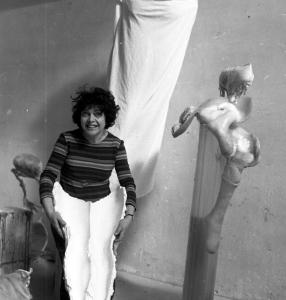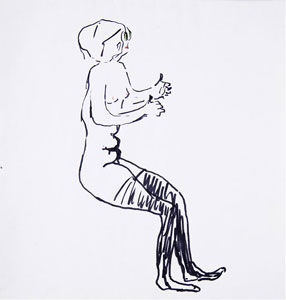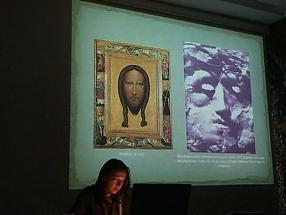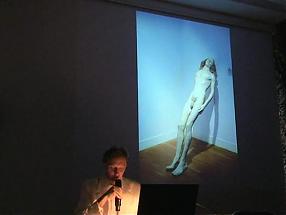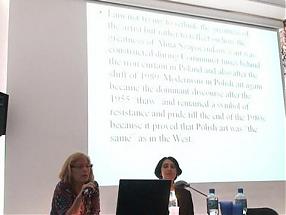Alina Szapocznikow Documents. Works. Interpretations
Anna Żakiewicz
In her drawings, Alina Szapocznikow soon—as early as in the 1950’s—abandoned academic chiaroscuro.
She started focusing on lines and smudges achieving the best effect by surprise. Perhaps she was aided in this effort by observing Roentgen x-rays, on which the three-dimensionality of the human body is reduced to light shadows against a dark background. A number of other artists were also fascinated by this phenomenon since the end of the 19’th century when Roentgen discovered the X rays (cf. Man Ray’s rayograms or the Roentgen image replacing the portrait of the beloved in Thomas Mann’s Magic Mountain). From the beginning of the 1960s, Szapocznikow used Roentgen pictures as matrices for monotypes, which are basically a graphic technique, as their effect is that of a print of a smooth surface, only, unlike typical graphic art, they are not reproducible. Those monotypes, even if they correspond to some of the artist’s sculptures, are really independent works of art. Szapocznikow drew additional elements on the prints, thus enriching and individualizing them.
